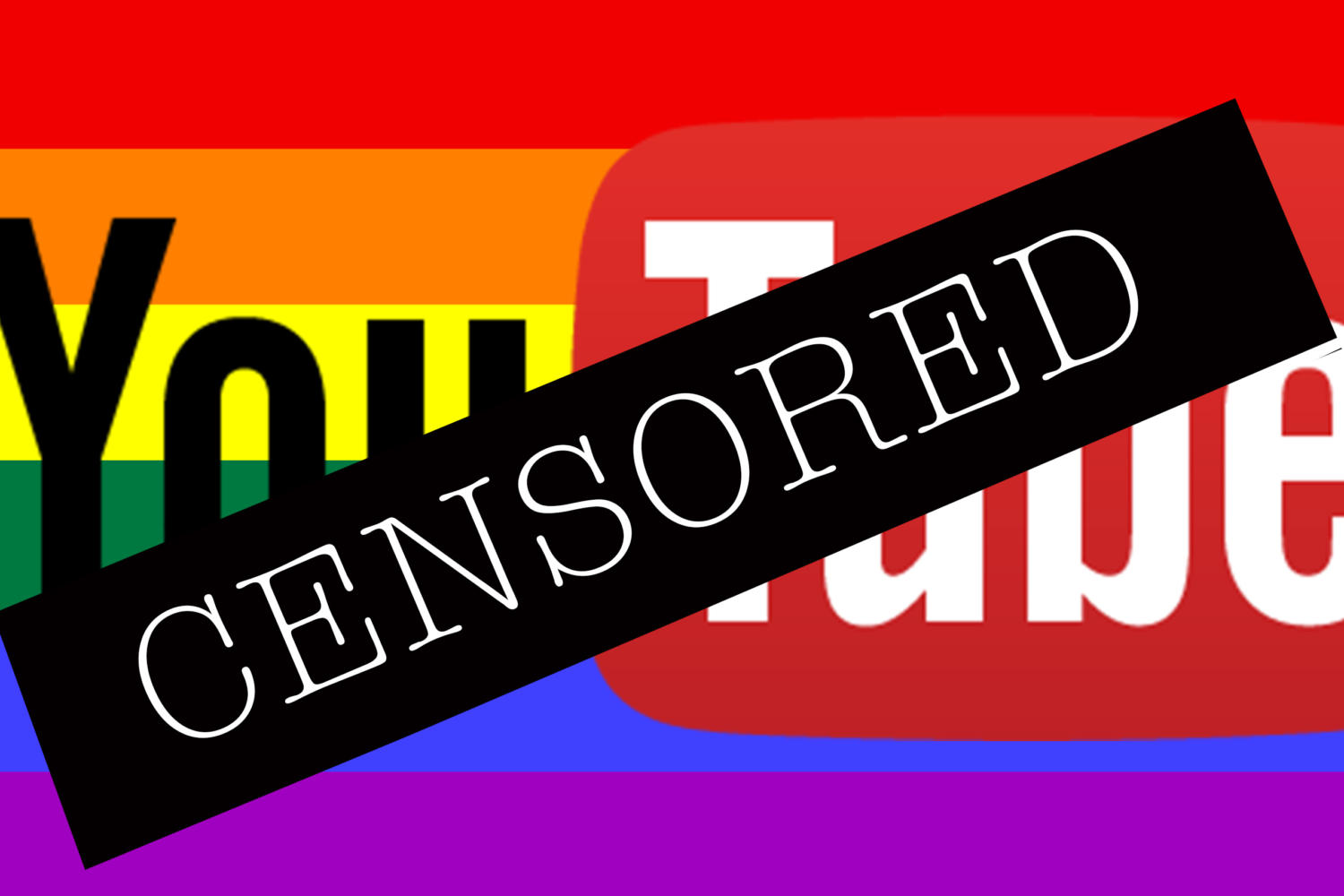YouTube’s Restrictions on LGBT Content Have Severe Consequences
YouTube, a popular video-streaming service, provides a seemingly endless stream of entertaining content for anyone with an Internet connection. Not all of these videos are family-friendly, however, so the company began filtering out more “adult” content for anyone under 18. This category includes videos with sexual content, profanity, violence, or drug/alcohol abuse – anything you would not want a youngster to see. Something more innocent – say, a video of a couple reading their wedding vows – would not be blocked.
Unless, of course, that couple happens to be YouTuber Ash Hardell and her partner, a – gasp! – lesbian couple. Recently, YouTube has been hiding videos about LGBT content, such as Hardell’s, in Restricted Mode. While this may seems like a harmless oversight, this filtering is actually indicative of a much larger problem. This filtering perpetuates the harmful misconception that all homosexual behavior is inherently obscene; if a straight couple kisses on camera, it’s #goals, but if a gay couple does the same it is “pushing the gay agenda” and inappropriate. Additionally, by hiding these videos for those under 18, YouTube is cutting off invaluable resources for LGBT youth. Youtube’s labeling of LGBT content as “mature” perpetuates age-old stereotypes and cuts off resources for youth in need.
The assumption that LGBT content deserves to be placed in the same category as videos about sex or drugs perpetuates the myth that homosexuality is inherently obscene. This myth is as old as time and is most frequently used by radical conservatives clutching their pearls and arguing that gay people should not have rights because, well, “just think of the children!” Censorship of “inappropriate” gay activity can be seen throughout recent history. Look at the 1958 civil rights case of ONE, Inc. vs. Olesen, when a gay magazine, which featured no explicit content but rather pro-gay editorials, was labeled “obscene” and promptly censored by the U.S. Post Office. The editors had to go all the way up to the Supreme Court to ensure they had the right to publish what they wanted to. Clearly, however, the Post Office’s homophobic beliefs exist today. The censorship of LGBT content under the guise that it is inherently “obscene” is a ridiculous mindset that is best left in the 1950s.
While the ideology behind YouTube’s LGBT restrictions is concerning, the impact this censorship will have on LGBT youth could be even more drastic. This group is particularly at-risk as they are more likely to face rejection, bullying, or even violence from those around them,which results in some disastrous consequences. According to the Trevor Project, the rate of suicide attempts is four times greater for queer youth than their straight peers. It is important that young queer teens have access to supportive environments and helpful resources. The importance of these resources cannot be underestimated; statistics show that youth who come from more conservative environments and less accepting families are 8.4 times as likely to have attempted suicide as queer peers who faced minimal rejection. To address this issue, many YouTubers have focused on providing advice and support for their young viewers. YouTube’s filtering of LGBT content limits access to these videos to anyone under 18, precisely the age group that is the most at-risk. Censoring these videos cuts off indispensable resources for LGBT youth who are in dire need of support.
YouTube’s restriction of LGBT content may not seem like a pressing issue, but the ideology behind it as well as its potential impact are quite alarming. The categorization of gay content as “adult,” even if it is not explicit, promotes a harmful myth that homosexual behavior is inherently obscene. Furthermore, because only those over the age of 18 can watch these videos, LGBT youth do not have access to valuable resources that could really be helpful. YouTube’s blocking of LGBT content hinders the recent progress of the LGBT movement and is an indication that there are still more challenges ahead we must overcome.
Hello there! Our goal is to provide relavent, engaging journalism for readers of all ages. Your donation will support the student journalists of the Wolfpacket at Claremont High School, and will allow us to purchase equipment, print our monthly issues, and enter in journalism competitions. We appreciate your consideration!

Genny Sanders is a senior at Claremont High, and she has been a part of Wolfpacket since freshman year. She is an Assistant Editor-in-Chief, which she...






